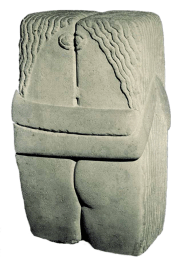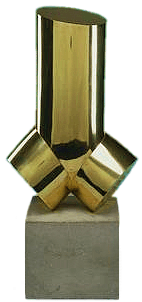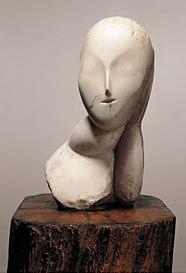Rodin in his time: Biographical materials saved from the Web |
||
|
Constantin Brancusi (1876-1957) Text archive copy of: http://www.guggenheimcollection.org/ When Constantin Brancusi moved to Paris from his native Romania in 1904, he was introduced to Auguste Rodin, the French master sculptor who was then at the height of his career. He invited Brancusi to join his atelier as an apprentice, but the younger artist—with the confidence, stubbornness, and independence of youth—declined, claiming that “nothing grows in the shade of a tall tree.” Brancusi rejected Rodin’s 19th-century emphasis on theatricality and accumulation of detail in favor of radical simplification and abbreviation; he suppressed all decoration and explicit narrative referents in an effort to create pure and resonant forms.
|
Brancusi, the Kiss, 1908
|
Brancusi, Male Torso, Cleveland Museum of Art |
|
Constantin Brancusi, The Muse, 1912. |
His goal was to capture the essence of his subjects—which included birds in flight, fish, penguins, and a kissing couple—and render them visible with minimal formal means. Brancusi often depicted the human head, another favorite subject, as a
unitary ovoid shape separate from the body. When placed on its side, it
evokes images of repose. Some of Brancusi’s streamlined oval heads,
whose forms recall Indian fertility sculptures in their fusion of egglike
and phallic shapes, suggest the miracle of creation.
|
|
|
|
||
|
|
|
|
Notice:
Museum logos appear only as buttons linking to Museum Websites and do not
imply any |
|


